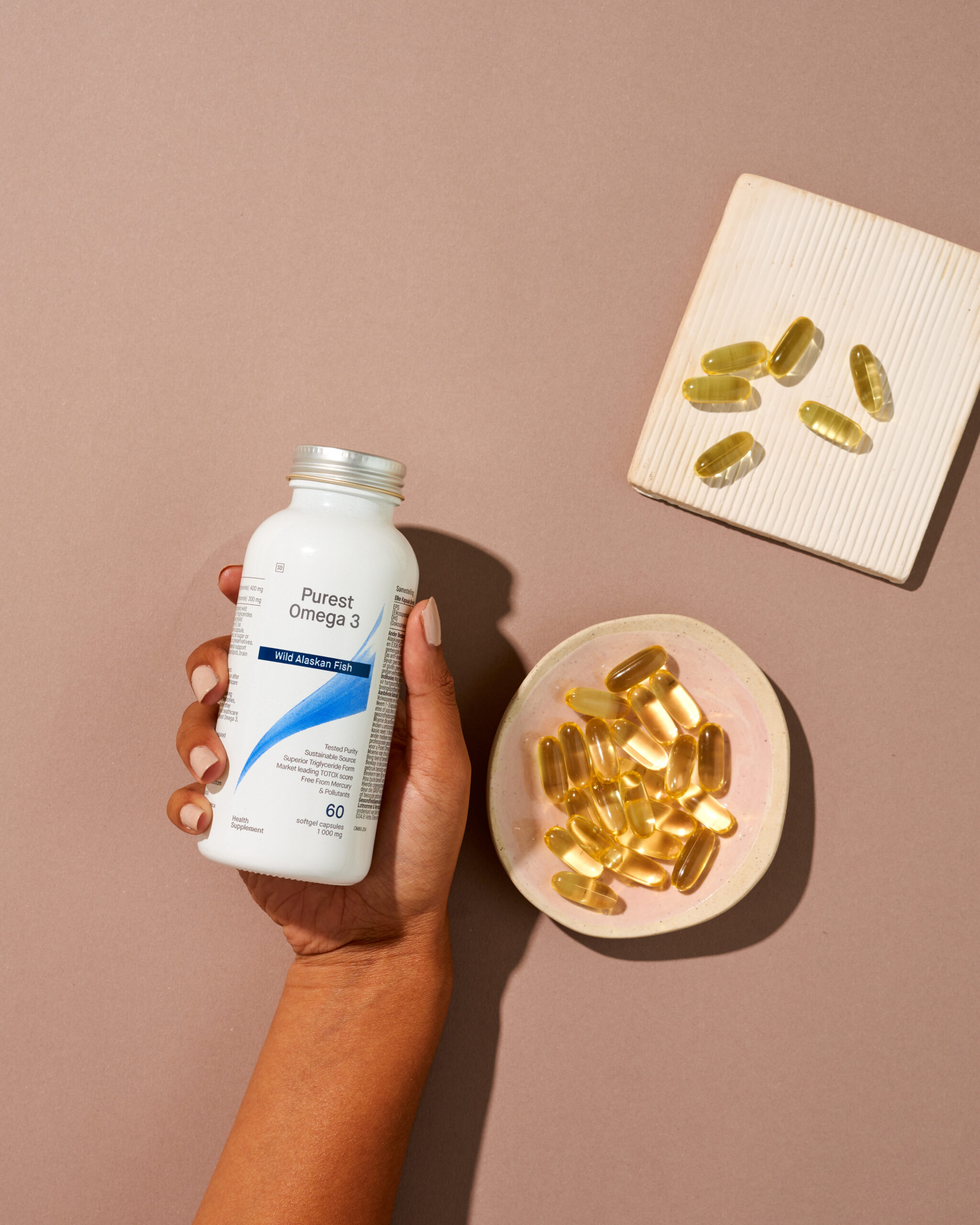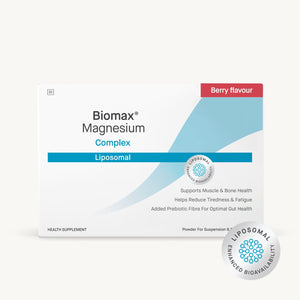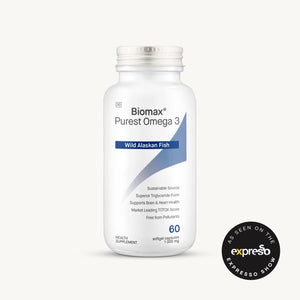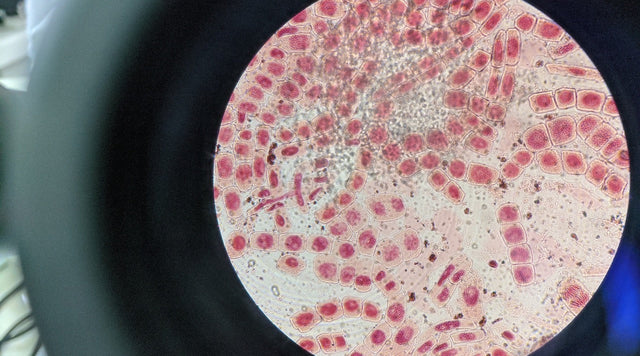Many people are surprised to learn that their bone and joint health may be at risk due to inadequate nutrition. Poor diet and nutrient deficiencies can lead to a decline in bone density and joint function, increasing the risk of developing conditions such as osteoporosis and arthritis.1 With the importance of nutrition in mind, this blog post will focus on addressing the problem of weak bones and joint issues by exploring the essential nutrients and dietary habits needed to support optimal bone and joint health.
Unlocking the nutritional keys to bone and joint health
A well-balanced diet plays a critical role in promoting bone density and joint function throughout life.1 The consumption of specific nutrients, such as calcium, vitamin D, and protein, is essential for maintaining and improving bone strength.2
1. Calcium: A Key Building Block for Strong Bones
Calcium is a vital mineral for maintaining bone density and preventing conditions such as osteoporosis, which affects millions of people worldwide.3 Dairy products, leafy green vegetables, and calcium-fortified foods are excellent sources of this essential nutrient.4
2. Vitamin D: The Sunshine Vitamin for Bone Health
Vitamin D works synergistically with calcium to support bone health, playing a crucial role in calcium absorption.5 Exposure to sunlight, consuming fatty fish, and taking vitamin D supplements are effective ways to ensure adequate levels of this vital nutrient.5
3. Protein: The Building Blocks for Healthy Joints
Proteins are essential for maintaining and repairing joint tissues, such as cartilage and ligaments, as they consist of long chains of amino acids, which are the true building blocks of proteins and connective tissue.6 One such example is collagen, a key structural protein found in cartilage and other connective tissues, providing strength and flexibility to joints.18 Including lean meats, fish, legumes, and dairy products in your diet can provide the necessary protein intake for optimal joint health, supporting the synthesis of collagen and other crucial components of joint tissues.7
Promoting Joint Health through Anti-Inflammatory Foods
Inflammation is a common cause of joint discomfort and pain. Incorporating anti-inflammatory foods into your diet can help alleviate these symptoms and promote healthy joint function.8 Some examples of such foods include:
- Omega-3 Fatty Acids: Found in fish such as salmon, mackerel, and sardines, these essential fatty acids have been shown to reduce inflammation and improve joint health.9
- Turmeric: This golden spice contains curcumin, a powerful anti-inflammatory compound that has been found to reduce joint pain and stiffness.10
- Berries: Rich in antioxidants and anti-inflammatory compounds, berries such as blueberries, strawberries, and raspberries can help protect joints from damage and inflammation.11

Adding Supplements to Boost Bone and Joint Health
While a well-balanced diet is the foundation for strong bones and healthy joints, there may be instances where dietary intake alone is insufficient in providing the necessary nutrients. Factors such as age, medical conditions, or dietary restrictions may hinder the body's ability to absorb or utilize nutrients efficiently.12 In such cases, incorporating supplements can be a valuable addition to your nutrition plan.
- Calcium and Vitamin D Supplements: For those who struggle to meet their calcium and vitamin D requirements through diet alone, supplements can help bridge the gap. These nutrients are often combined in a single supplement, making it convenient to support bone health.2 Phytomist™ Vitamin D3 + K2 Oral Spray and Vitamin D3 Oral Spray provides a convenient way to deliver this vital vitamin straight into your bloodstream.
- Magnesium: is another essential mineral that plays a crucial role in bone and joint health. It contributes to bone mineralization and is involved in the activation of vitamin D, which helps with calcium absorption.16 Magnesium can be found in foods like whole grains, nuts, and leafy green vegetables, but for those who have difficulty meeting their daily requirements, magnesium supplements may be a helpful addition. Adequate magnesium intake can help maintain bone density and potentially reduce the risk of developing osteoporosis.16 Biomax® Magnesium Complex is a highly absorbable and bioavailable magnesium supplement, containing both magnesium citrate and liposomal magnesium for sustained release.
- Omega-3 Fatty Acid Supplements: For those who do not consume fatty fish regularly, omega-3 supplements such as fish oil or algae-derived DHA and EPA can provide the anti-inflammatory benefits of omega-3 fatty acids for joint health.14 Coyne Purest Omega 3, boasts a leading TOTOX score (which measures oxidation), meaning we guarantee fresh and pure omega-3s for optimal health.
- Curcumin: Curcumin is the active compound found in turmeric; a spice known for its potent anti-inflammatory properties. Research indicates that curcumin may help alleviate joint pain and inflammation associated with conditions such as osteoarthritis and rheumatoid arthritis.17 Although incorporating turmeric into your diet can provide some benefits, curcumin supplements may offer a more concentrated and effective dose for targeting joint health. Coyne Bio-Curcumin® with BCM-95® uses market-leading BCM-95™ curcumin, which allows your body to efficiently deliver high levels of bioactive curcumin and whole turmeric into the bloodstream.

Proper nutrition is the foundation for maintaining strong bones and healthy joints throughout life. By incorporating key nutrients like calcium, vitamin D, and protein, along with anti-inflammatory foods, you can achieve optimal bone and joint health. Phytoceutics™ Bone and Joint Health range includes a variety of innovative, high quality, effective and highly researched products you can trust to help maintain bone and joint health, and address pain and inflammation. Embrace the power of nutrition and unlock the secret to a healthier, more vibrant life.
Disclaimer: This content is for informational purposes only and does not constitute medical advice. Always consult with your healthcare provider before starting any new supplement, especially if you are pregnant, nursing, have a medical condition, or are taking prescription or chronic medication.








